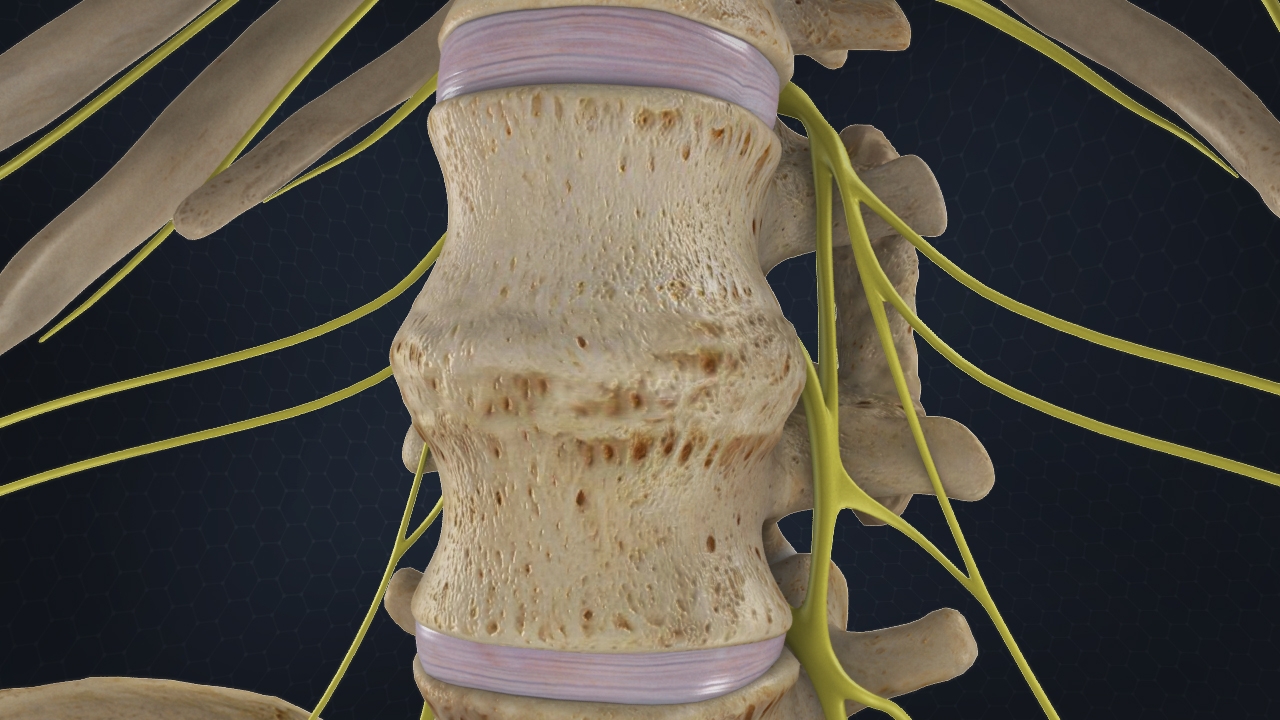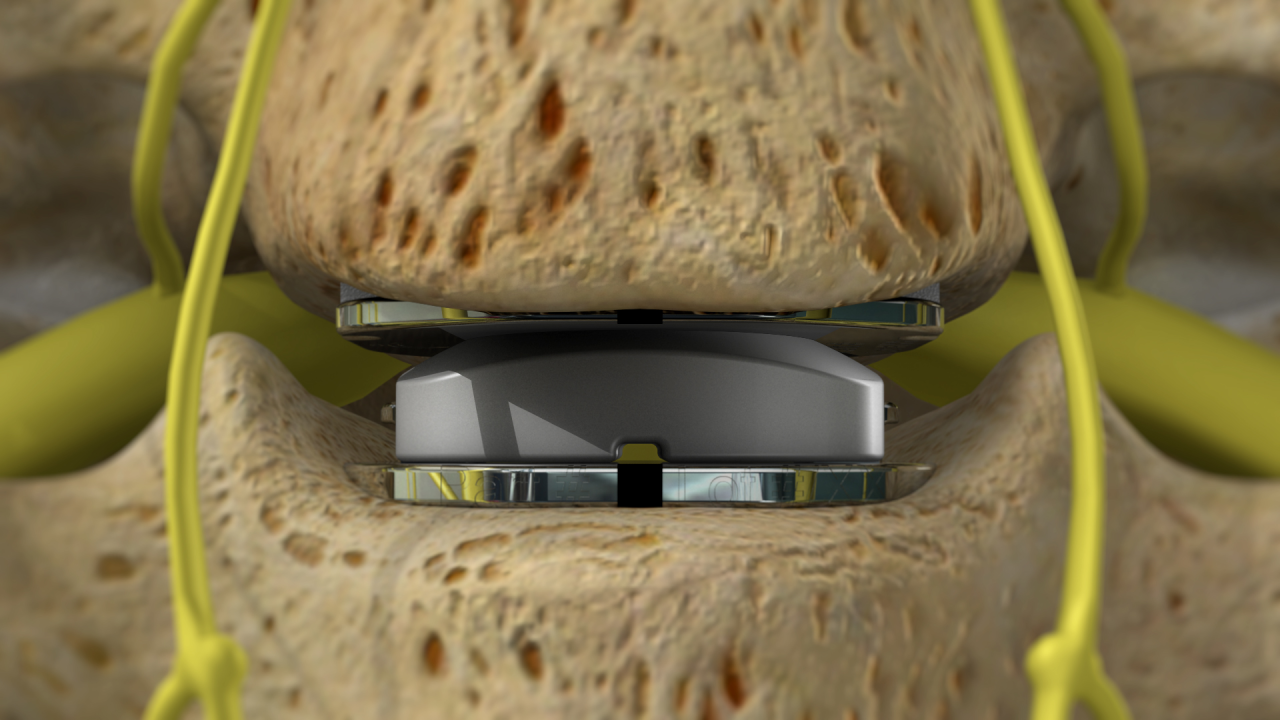Motion Preservation Surgery
Motion preservation surgery is an alternative to traditional spinal fusion surgery.

Traditional Spinal Fusion
In a traditional spinal fusion, problematic vertebrae are fused together to restrict movement and eliminate pain.
However, this fusion can transfer stress to adjacent parts of the spine and potentially cause further issues down the line, a condition known as adjacent segment disease (ASD).

Motion Preservation Surgery
Motion preservation surgery aims to address these issues by preserving the natural movement of the spine.
It involves replacing a damaged disc with an artificial one or decompressing the spinal nerves while leaving the vertebrae mobile.
Examples of motion preservation techniques include:
Artificial Disc Replacement
(ADR)
Learn more
In this procedure, a damaged disc is replaced with an artificial one that allows for movement, much like a natural disc.
Dynamic
Stabilization
Learn more
Dynamic stabilization uses flexible materials to stabilize the spine while maintaining some degree of flexibility and movement.
Interspinous Process Decompression
(IPD)
Learn more
In this minimally invasive procedure, a spacer is inserted between the spinous processes – the bony protrusions along the back of the spine – to relieve pressure on spinal nerves.
Posterior Motion
Devices
Learn more
These devices are attached to the spine to restore stability and allow controlled motion.
Advantages of motion preservation surgery may include:
-
Maintained MobilityUnlike spinal fusion surgery that restricts movement by fusing vertebrae together, motion preservation surgery aims to maintain or restore the spine’s natural movement and flexibility.
-
Reduced Risk of ASDFusion surgery can transfer stress to adjacent vertebrae, potentially causing these segments to degenerate over time, a condition known as adjacent segment disease. By preserving motion, this surgery may reduce the likelihood of this condition.
-
Potentially Faster RecoverySome types of motion preservation surgery are minimally invasive, leading to potentially shorter hospital stays and quicker recovery times.
-
Preservation of Spinal AnatomyThese techniques aim to preserve the natural structure and function of the spine as much as possible, potentially reducing long-term impacts on spinal anatomy.
-
Pain ReductionBy addressing the underlying issues without restricting movement, many patients experience significant reduction in pain and improved quality of life.
-
Future Treatment OptionsUnlike fusion, which is a permanent alteration, motion preservation techniques can often be revised or converted to a fusion if necessary, providing more options for future treatment.
We understand that every patient is unique, and not everyone will be a suitable candidate for Motion Preservation Surgery. Here at The Spine Institute, our highly skilled team will conduct a comprehensive evaluation to determine the best treatment plan tailored to your needs.